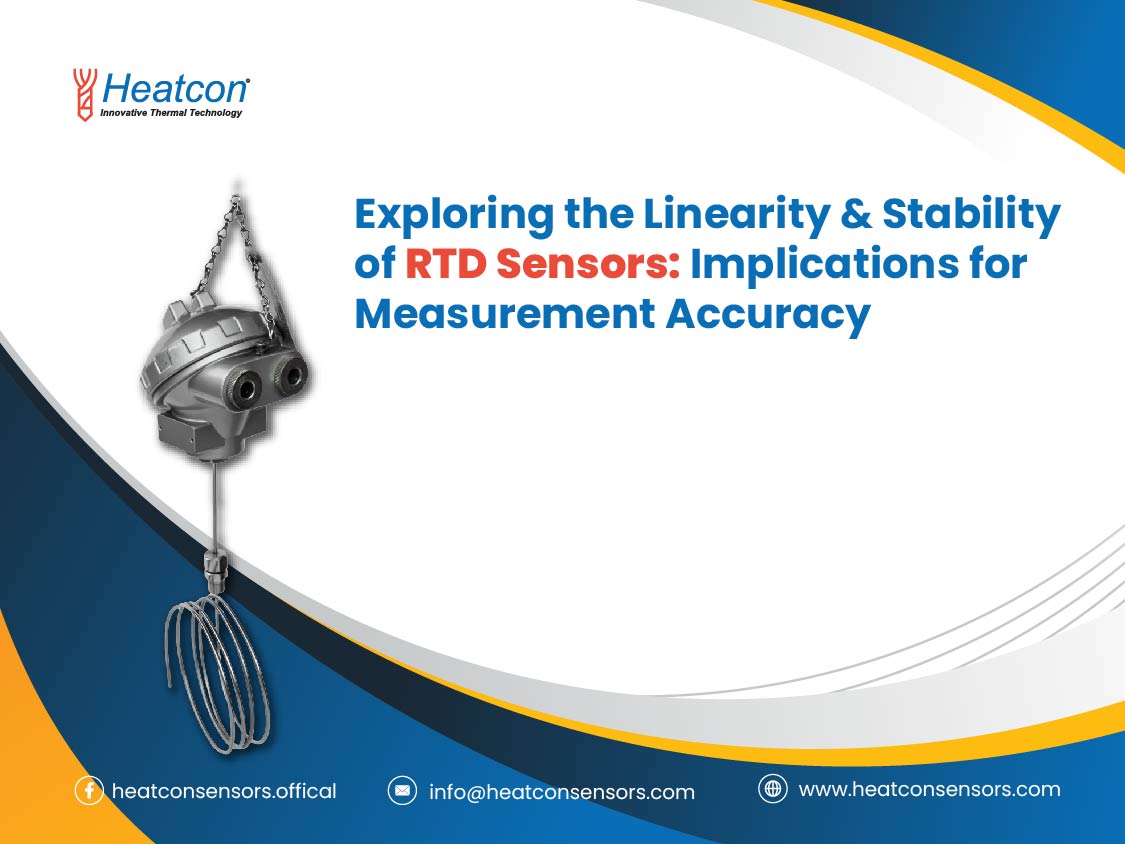In the utter realm of temperature measurements, RTDs (or Resistance-Temperature-Detectors) happen to be those sensors that play a significant role owing to their accuracy, reliability, & stability. Such sensors operate on the principle of certain metals’ electrical resistance changing predictably with temperature variations. However, to ensure precise temperature measurements, it becomes important to understand 2 key characteristics of these RTD sensors: linearity & stability.
Understanding Linearity
Linearity refers to the relationship between the change(s) in temperature and the corresponding change(s) in the resistance exhibited by RTD sensors. In a perfect scenario, such a relationship has to be perfectly linear, meaning that a uniform change in temperature would result in a proportional steady change in the resistance. However, what happens in reality is somewhat different, sometimes these RTD sensors tend to deviate from their perfect linearity owing to varied reasons like material impurities, manufacturing tolerance, as well as their designs. For assessing the linearity of RTD sensors, a calibration curve/equation is usually provided relating resistance to temperature across the operating range of these sensors.
How to Evaluate Linearity?
By comparing the actual response of the sensor to the calibration curve, users can evaluate the linearity and determine any potential deviations happening. Ensuring linearity is highly crucial for precise & accurate temperature measurements, specifically in applications where precise control/monitoring is much needed, like in environmental monitoring, industrial processes, and scientific research. Deviations from linearity could possibly cause errors in temperature readings, and this might pose implications for process efficiency, product quality, as well as safety of the system.
Examining Stability
Stability refers to the ability of RTD sensors to maintain calibration & performance characteristics over time and under changing environmental conditions. RTD sensors, like other temperature sensors, are too subjected to harsh operating environments, like temperature maximums, mechanical stresses, humidity, and chemical exposure. Such conditions tend to potentially degrade their materials and change their electrical properties, leading to a drift in calibration and thus diminished measurement accuracy. For assessing stability, these RTD sensors have to undergo rigorous testing(s) under simulated environmental conditions so as to evaluate their long-term performance. In addition, proper installation, timely calibration checks, and preventive maintenance exercises can help mitigate stability issues, which in turn ensures consistent measurement accuracy throughout the lifespan of an RTD sensor.
Implications for Measurement Accuracy
The linearity & stability of RTD sensors tend to have profound implications for measurement accuracy across various industries & applications. In the segments including pharma, food processing, and HVAC, accurate & precise temperature control holds critical importance for ensuring product quality, regulatory compliance, as well as operational efficiency. For example, in pharmaceutical manufacturing, even slight deviations in temperature can affect the efficacy & stability of drugs, leading to potential product recalls or even compromised patient safety, which would be the last thing anyone would want. Similarly, in HVAC systems, precise & accurate temperature sensing happens to be quite essential so as to maintain indoor comfort levels while optimizing energy consumption at the same time. Additionally, in scientific research & lab settings, experiments often need precise temperature control, so reliability & accuracy of temperature measurements become paramount for obtaining meaningful & reproducible results.
In conclusion, understanding the linearity & stability of RTD sensors holds prime importance in ensuring measurement accuracy in temperature-sensitive applications. So, by choosing high-quality sensors, performing regular calibration checks, and implementing appropriate maintenance practices, you can enhance the reliability & performance of your temperature measurement systems, ultimately contributing to improved product quality, process efficiency, as well as system safety. As technology continues to advance, ongoing R & D efforts aimed at further enhancing the linearity, stability, and overall performance of these RTD sensors will undoubtedly drive innovation in temperature sensing and thus pave the way for new applications & advancements across various industries. You are sure to find the best shopping experience for such products at Heatcon Sensors!


